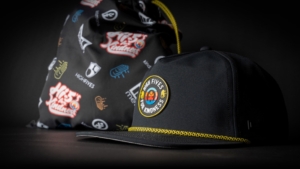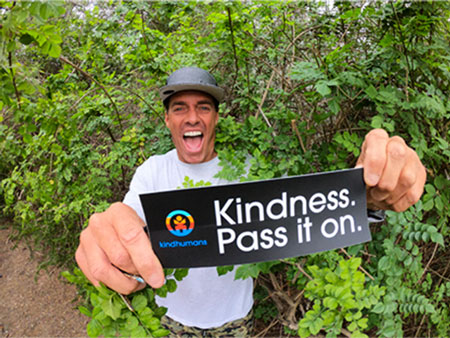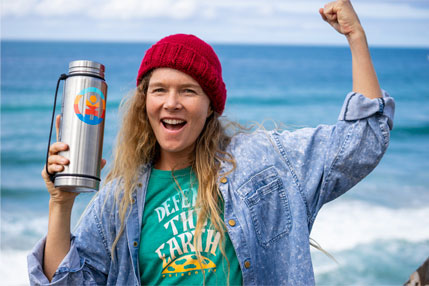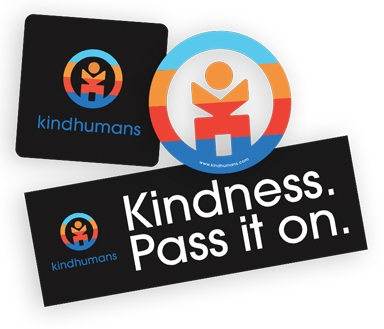
Where Does It Go? Part 3: Clothing
PlanetWhere Does It Go? Part 3: Clothing
Our friends over at the Changing Tides Foundation are working on a series titled “Where Does It Go?” The series follows our waste and aims to educate us on proper disposal techniques — this is Part 3 — check it out!
Changing Tides Foundation wanted to know if there was such a thing as “away” when we throw things out. In an effort to learn more about what happens to what we consider “trash,” they have created a series called “Where Does It Go?” which explores where things go once we dispose of them. In the third episode of this series, they explore clothing, to learn about what happens to clothes when people are finished with them. Read the full story from Changing Tides below. – KH
In Episode 1 of the Where Does It Go? series, we looked behind the scenes at Recycling to explore what happens to the items in our blue bins once they leave our homes. Episode 2 explored Motor Oil, the environmental impacts of oil and how it gets recycled. In Episode 3 of our Where Does It Go? series we are exploring the environmental impacts of one of the biggest polluters on the planet: Clothing.
Clothes are, quite literally, something we aren’t equipped to live without. We wear layers upon layers of it each day, from underwear to socks, t-shirts to jackets. They keep us warm and dry and protected from the elements. But as we dive deeper into ways we can live more sustainably and consume more responsibly, it has become critically important for us to take a look at the environmental impact our clothing has. What we found is quite disturbing, and prompted us to explore solutions to the pollution problems that clothing production and clothing waste create globally.
Did you know that in the US alone, 25 billion pounds of textiles are generated each year, while less than 1% of the materials used for those items will be recycled into new clothes at the end of their lifecycle?

The ugly truth about the fashion industry is that it is one of the most polluting industries in the world and one that we each contribute to with our daily decisions of what to wear and what to do with our clothing when we are finished with them.
So, regarding clothes, we asked the question: Where Does It Go?
Unfortunately, 85% of textiles around the globe end up in landfills. Thanks to fast fashion, 60% of all clothing produced end up in landfills within the FIRST YEAR of being made. We found that number frankly shocking!

Maybe you’re thinking: “But I don’t put my clothes in the trash, I donate my clothes.” Well, prepare to be shocked. Clothing donation is complicated. As it turns out, less than 20% of clothes donated to charities are actually resold at those charities. The other 80% gets sent to textile recyclers who make decisions about where our clothes end up. Some of it gets cut into rags for industrial use, some of it gets processed into fiber filling that gets used for things like furniture and insulation. Clothes that are wet, moldy or contaminated gets sent to landfills. Everything else gets exported. The truth is, there are far more unwanted donated clothes than there is a demand for them, so exporters find another market for them. The US exports over 1 billion pounds of used clothing per year, lots of which ends up in Africa. This is the mess we have created with fast fashion.

We could go on and on about the amount of water and resources necessary to produce our clothing, the waterway pollution that textile production and dyes create, the dangerous working conditions our textile makers are subjected to globally, and about the microfibers that our synthetic clothing sheds in the wash (which end up in our waterways, oceans, and eventually back in our own bodies when we drink bottled water, eat seafood, or even when we breathe!). Gross! But you can explore that on your own: If you’re interested in learning more about this, please visit Fashion Revolution who are doing substantial things to bring awareness to these issues.
Any time we discover a big problem, our focus turns to solutions. Once we know better, we can do better, which makes us want to celebrate people and companies who have found creative solutions to the clothing waste problems we face.
As an example, Patagonia’s Worn Wear program is what every apparel company should strive for. It takes back old Patagonia clothes and bags, and repairs and upcycles them into new items. To be honest, Worn Wear deserves a blog of its own. It is a true exemplar, proving the concept and showing that Patagonia is willing to take responsibility for clothes they create and do what they can to keep them in use and out of the trash. Worn Wear allows you to mail in your used gear or drop it off at a Patagonia shop in exchange for store credit. In addition, “Worn Wear teams” tour around the world repairing people’s clothing and wetsuits (for free!). They have even created a collection called Recrafted, where they take old clothes and make new one-of-a-kind items to resell, eliminating the need for new textiles and keeping old ones out of the landfill. Keeping clothes in use just 9 extra months can reduce the related carbon, water, and waste footprints by 20-30%. Worn Wear also partners with individuals and companies and sends them the used product, allowing makers to get creative and upcycle them into new things, keeping them in use.
This brings us to Ed Lewis. Ed runs Enjoy Handplanes, where he upcycles old surfboards and materials into bodysurfing handplanes. Ed is a member of Patagonia’s Worn Wear Program. As a Worn Wear partner, he upcycles the items sent to him, like shirts and shorts, and integrates the fabrics into his handplane designs. Creative, right? Well it doesn’t stop there. Ed’s gone one step further and is now using old backpacks, luggage, and clothes to create luggage tags, breathing new life into something that most would consider trash. These luggage tags are then available for purchase at most US Patagonia stores and are only available online in our shop (lucky us!). The icing on the cake is that a portion of the proceeds of each luggage tag sold gives back to Changing Tides Foundation. Further, they double as a travel wallet and include information about their creation…and have some travel tips by our favorite eco-adventurer, Captain Liz Clark, encouraging people to adventure consciously.
Sorry, we get really excited about the luggage tags, now back to the clothes! Unfortunately, the average American throws away 80 lbs. of clothing per year. The number of garments purchased by consumers increases 16% each year, which is why before buying brand new clothes you should consider second-hand purchases through consignment and thrift stores.

Which brings us to our thrifting hero: Emily Karrier. Em is the founder of eMpulse, a sustainable clothing brand out of San Diego. She starts with thrifted, discarded, or vintage pieces that are turned into one-of-a-kind original designs like jackets, flannels, and shirts which she sells locally at markets. Now that is a great solution!
Another impressive recycling effort is Marine Layer’s Re-Spun program. Customers send in their cotton T-shirts for a $5 credit, which Marine Layer respins into new T’s. So far in 2019 the program has diverted over 30,000 lbs. of textile waste from landfills, proving that consumers are looking to support these alternatives.
There are plenty of other notable efforts to break the cycle of textile waste, and as entrepreneurs begin to realize the importance of putting planet first, and we, as consumers, want to support these efforts, its seems new initiatives to repurpose and upcycle are coming up each day.
For example: We recently discovered Unspun, which is a denim brand and a production method whose mission is to make the design, manufacturing, and consumption of fashion intentional and conscious. They keep zero inventory, which means they are producing jeans on-demand and are dedicated to the creation of woven garments made from durable and responsible materials to shape without creating cutting waste. They create jeans through coded software that can be used by other companies to make products without waste. First you select a style, then you get a 3-D scan of your body; it takes 2-3 weeks for them to engineer, and voilà: you have a perfect pair of jeans made just for your body. Pretty creative blend of science and fashion, while keeping the planet in mind, don’t you think?
Even with all these improvements and initiatives, we still believe that, like everything else, the best solution for the pollution problems created by the fashion industry is to turn off the tap at the source. And while we would love to continue to celebrate the creativity these companies are cultivating in keeping the planet in mind, we want to share with you what WE can do, as individuals, to be better consumers and keep more clothing out of the landfill.
So how can we reduce our impact on Mother Earth when it comes to clothing?
1. REDUCE: Let’s consume less. Period.
2. REUSE: When we do consume, let’s shop second-hand from thrift stores, consignment boutiques, and online used clothing sites.
3. BE DISCRIMINATING: No matter what, try to stay away from fast fashion and spend a few extra bucks on quality clothing made from sustainable materials like cotton, wool, and hemp, that will last. We should buy from responsible companies that keep the planet in mind throughout the whole process, from sourcing sustainable materials and using eco-friendly dyes, to paying fair wages and having safe working conditions, and that have take-back or upcycle programs like the ones we mentioned above.
4. REUSE #2 / UPCYCLE / SWAP: Don’t throw your clothes away. If it breaks, repair it. If you’re bored with it or grow out of it, get creative and upcycle your clothes into something new, or consider hosting a clothing swap or selling online or taking your old clothes to a consignment store.
5. DONATE: The very last option should be to donate your used clothes to your local homeless shelter, a charity or a thrift store, where it can be put to use.
The main goal is to keep these clothes out of the trash and away from our landfills!
–CTF

Read part 1 of “Where Does It Go?”
Read part 2 of “Where Does It Go?”











